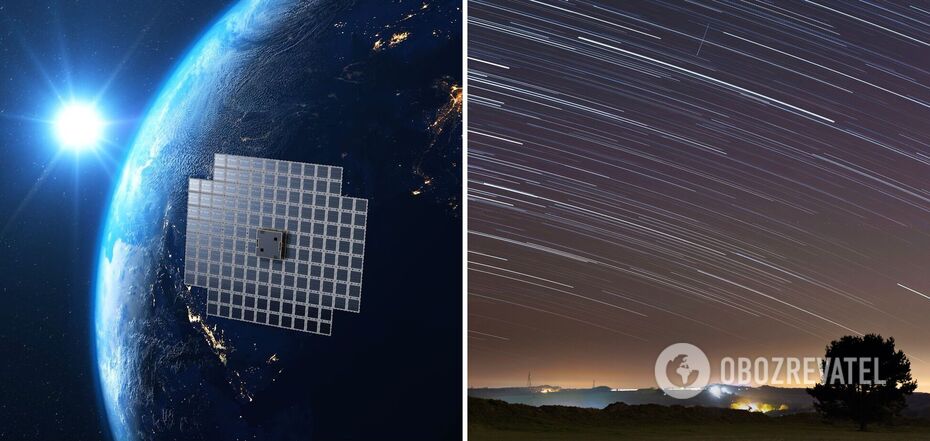News
The artificial satellite has become one of the brightest objects in the Earth's sky: things will only get worse
One of the top 10 brightest objects in the night sky is not a planet or even a star, but a BlueWalker 3 communications satellite. It is a prototype of a constellation of broadband satellites called BlueBird, which will be launched in 2024. Their appearance in the night sky can create serious problems for earthly astronomers.
This is stated in a study published in the journal Nature. According to Inverse, due to the dominance of satellites in Earth orbit, even the most powerful telescopes on the planet can become "blind" (to watch the video, scroll to the end).
The BlueWalker 3 satellite was launched in September 2022 and now, as researchers have found, it is the eighth brightest object in the sky. It is somewhat dimmer than the blue supergiant star Rigel in the constellation Orion and brighter than the star Procyon in the constellation of the Little Dog.
In a year, this satellite will become part of an artificial constellation of broadband satellites called BlueBird, owned by AST SpaceMobile. It is planned to launch 20 satellites by the end of 2023 and five more in early 2024. Thus, 25 objects will appear in the sky at once, the brightness of which exceeds all but seven stars in the sky.
It's not just a small ball or something like that. BlueWalker 3 solar panels have an area of 64.3 square meters and reflect a lot of sunlight. This is what makes them so bright.
Astronomers from around the world, led by Atacama University astronomer Sangeetha Nandakumar, recently tracked the satellite to accurately measure its brightness, and the results were alarming.
"The trend toward launching larger and brighter satellites continues to grow," the scientists write.
For example, Amazon plans to launch 3,200 broadband satellites in its Project Kuiper constellation in 2024. SpaceX's StarLink constellation already has more than 5,000 satellites in low Earth orbit, and the company plans to double that number over time.
All of these satellite constellations could eventually become a real problem for astronomers working with ground-based telescopes. This number of satellites, which will also reflect a lot of sunlight, will make it difficult to observe space from the ground, even with the world's most powerful telescopes.
And it's not just visible light that will interfere, but also radio signals and infrared radiation from all these satellites that will interfere with telescopes scanning the sky.
The researchers emphasize that even before the satellites enter orbit, it is necessary to study how they will affect the night sky and only then give permission to launch. Nandakumar also recalled that StarLink once experimented with applying dark coatings to some of its satellites. This made them about half as bright as those that were not coated.
Scientists also point out that light pollution from the ground also creates problems for astronomers. One study showed that the night sky is getting brighter by 10% every year, and in about two generations, people will create so much light "noise" that in most countries of the world, they may not be able to see the stars at all.
Earlier, OBOZREVATEL reported that China wants to launch 13 thousand satellites that can destroy Starlink.
Subscribe to OBOZREVATEL's Telegram and Viber channels to keep up with the latest developments.



























